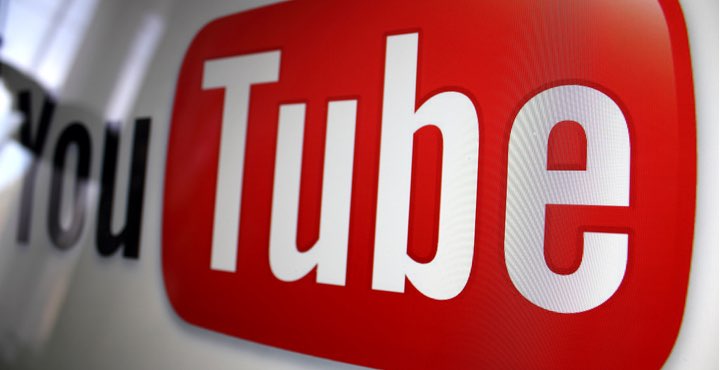Explainer
The Art and Science of Buying YouTube Views
Table of Contents
Main article: Axanar Accuses Horizon of Buying Views
See also: Why Star Trek–Horizon’s Success Matters
With Star Trek–Horizon just days away from overtaking Prelude to Axanar‘s record-setting YouTube views, Axanar charged the upstart production with buying views to inflate its viewership, shining a light on the questionable social marketing practice.
UPDATE Just before 2 pm PDT, August 23, 2016, Star Trek–Horizon overtook Prelude to Axanar. Horizon had logged 2,565,757 views, compared to Prelude at 2,564,967.
The confrontation was sparked by an AxaMonitor report wondering why a few dozen dummy tweets were mysteriously posted at the same time, pointing readers to Prelude‘s YouTube page, followed by the observation that Horizon‘s viewer count was closing in on the Axanar short film. The report noted:
The Twitter account @TrekSentry47 pointed out Star Trek–Horizon has racked up — in only five months — nearly the same number of views as Prelude, which took two years to get its views.
What's at Stake?
The impending overtaking — expected August 23, 2016 — challenged Axanar producer Alec Peters’ characterization of Prelude as “the most successful Trek film ever”1) — “by any metric,” added director Robert Meyer Burnett.2)
See also: Why Star Trek–Horizon’s Success Matters
Then this happened on August 20:
Axanar @startrekaxanar You would have to compare real stats not views that Horizon bought, like its 3m views for its trailer.
Asked by several Twitter users to provide evidence, Axanar instead posted:
Axanar @startrekaxanar Simply compare stats - Views/likes/comments. You can’t have same # of views & 1/2 the comments & likes. 3)
But since YouTube does not require viewers to comment or like/dislike a video they’ve watched, the scenario painted by Axanar is entirely possible, even common.
A Shadowy World
However, Peters’ claim that somehow Horizon‘s viewership as displayed on the film's YouTube page was false brought to light a practice, little-known outside the world of social marketing, by which video producers try to raise their social media profile by paying specialized companies to inflate their view counts on the ubiquitous video platform.
How it Works
The Daily Dot’s Chase Hoffberger described how the practice works and what it costs in the article, “I bought myself 60,000 YouTube views for Christmas,” written after YouTube had stripped Universal’s and Sony’s music channel of 2 billion fake views in a site-wide crackdown on artificial video views, largely achieved by bots:
A litany of emails flowed into my inbox in the days that followed its posting. All of them alluded to the size and scope of the YouTube view-buying industry. They said that view buying was rampant — that it happened in and around all corners of the site. … Knowing that it’s better to show than tell, I set out to find out. Just how easy is it to buy YouTube views, and what exactly happens when you’ve done it?4)
Hoffberger recounted how he bought the views from a service called YTView, a Malaysia-based company owned by someone with the Skype handle KenzoTanaki. “The site promises ‘real views,’ ‘higher retention between 60 and 100 percent,’ and claims to have delivered more than 400 million views.”5)
At the time, 2 million YouTube views cost $1,580. And YTView is far from the only purveyor.
Truth or Consequences
As the crackdown on Sony and Universal demonstrated, Google-owned YouTube has an interest in providing accurate metrics for the videos on its platform. Google, for example, often changes its search algorithms as it detects websites are trying to game the system to appear higher on the engine’s reliable search results.
Detecting Fraudulent Views
For its part , YouTube periodically revises the view counts of its videos when it detects fraudulent views. So it’s no wonder that video producers wonder what the repercussions of buying views might be, as seen in this question posted on the answer website, Quora:
I am looking to rank a video. So before purchasing any views for my youtube views, I would like to be sure that my video will not get banned because of these views.6)
The 17 replies that follow blithely encourage the questioner to purchase the views but from a “reliable” company whose fake views won’t later get reduced by YouTube — “money down the drain,” as one respondent described it.7)
« We believe it’s crucial to improving the accuracy of view counts and maintaining the trust of our fans and creators. » — Google, about revising YouTube view counts
Quora respondent Robert Dupont further notes that buying fake views can still hurt a YouTube video:
While your video won’t get removed, your views can disappear later on. YouTube will do occasional sweeps of views after improving their algorithms so the view count can drop later on because of fake views, and believe me, the fake views that are typically sold are not hard to spot in your video analytics.8)
Dupont pointed to a graph of YouTube views with obvious, sharp spikes in activity indicating purchased views, as well as a lack of engagement by fake viewers:
If you buy views from just any website, you’ll likely be getting ONLY views. No likes. No dislikes. No comments. Nothing else. This will look suspicious to any real viewer and can hurt your reputation. If you do end up buying views, it HAS to look authentic. The company either has to provide engagements with views, OR you have to buy or gain engagements quickly..9)
Hoffberger noted in The Daily Dot that where views come from can indicate fraud as well. “You can tell if a YouTube view is faked by the place in which YouTube says that the view was accrued,” he wrote, citing countries like Russia, Ukraine, India, Poland, Romania, Thailand and Indonesia. A distinct lack of U.S. views was a telltale sign of fakes.10)
Since 2014, YouTube’s view count revisions have often appeared as “negative views,” often in a single day, in graphs charting a video’s growth in viewership.11) 
Keywords

